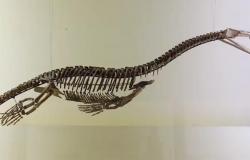
‘Oumuamua was identified 7 years ago. Hides important secrets about our galaxy
Since passing through our solar system between 2017 and 2018, ‘Oumuamua has become a fetish object for some scientists looking for evidence of the existence of extraterrestrial civilizations. Some of these scientists have a new plan to study this object.
Mission to ‘Oumuamua. The plan is to study it on site, through a probe, an extreme plan if we take into account that ‘Oumuamua is moving away from our solar system at a speed of approximately 26.3 kilometers per second. This is the Lyra project, a plan that has been in the making for years.
Lyra Project. The name of the project is due to the apparent origin of ‘Oumuamua, in the constellation of the Lyra. Behind the project is the center called Initiative for Interstellar Studies (I4IS).
To reach the object, the probe would use not new and powerful propulsion systems but rather an approach based on gravity. The probe would take advantage of the gravitational pulls of the Earth, the Sun or other objects in our solar system to gain momentum towards the edges of our solar system.
A mechanism similar to that used by the European Space Agency’s JUICE probe to reach the icy moons of Jupiter with enough fuel to maneuver once at its destination.
End of the century. I4IS member Adam Hibberd published in the repository ArXiv a draft article in which he analyzed how long it would take for this mission to reach its destination. According to his calculations, a mission launched in February 2030 would reach ‘Oumuamua around the year 2086, while a mission launched in March 2031 would reach its destination as early as the year 2175.
Plan B. The Lyra project contemplates the possibility that ‘Oumuamua may become unreachable. In that case it would be enough to “reconvert” it, wait for the next interstellar object and send a probe to chase it.
The first interstellar object (more or less). ‘Oumuamua was the first asteroid in our solar system to be identified as an interstellar object. So far, four objects have been identified whose origin would probably be outside the confines of our solar system.
These are two asteroids (‘Oumuamua and Borisov) and two meteors that reached the atmosphere of our planet (IM1 and IM2). These last two meteors reached Earth in 2014 and 2017, before ‘Oumuamua’s approach, but their potential interstellar origin was not indicated until after the approach. Borisov, for his part, was sighted at the end of 2019.
It’s possible? Hibberd’s estimates have not yet been published in a peer-reviewed study so they must be taken with caution. Even so, the possibility of achieving such a long-term mission involves enormous difficulties.
In Xataka | Avi Loeb believed he had found aliens. Does anyone have a simpler explanation: pollution?
Image | European Southern Observatory / M. Kornmesser





